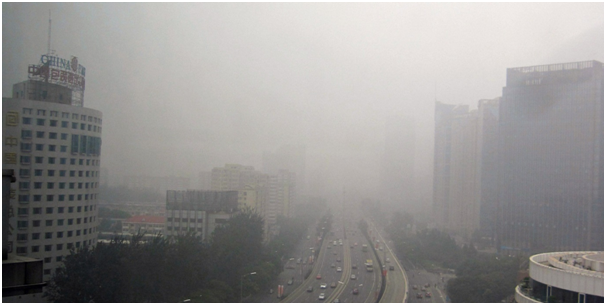Grubby, dirty buildings are a common sight in our built-up areas of cities and towns. But did you know that the dirt that accumulates over many years gives off ozone when exposed to sunlight, the damaging substance found in smog. Smog is extremely harmful to public health. Dirty buildings in cities were previously not considered in matters of urban pollution, but a new scientific study changes that opinion. So, it would now appear that not only are grubby buildings an eyesore, but they could be contributing to harmful air pollution.
In congested urban environments, dirt and grime accumulates on the surface of buildings as a result of thousands of particles in our atmosphere. Building dirt can consist of thousands of different substances, most of which come from car exhausts, factory emissions and other manmade activities.
One of the substances is nitrogen oxide, which splits when exposed to sunlight to create nitric oxide and an oxygen atom. The released oxygen atom becomes assimilated with the oxygen in the atmosphere and it’s this process that causes ozone to form.

Ozone naturally exists, up high in the sky’s stratosphere. It’s created during the process of ultraviolet radiation breaking oxygen molecules. This is the essential protective layer, keeping life on earth safe from harmful UV rays. Down on the ground though, it’s a different story. Ozone becomes a pollutant with health damaging consequences, as the main substance in smog – a combination of ozone, carbon monoxide, nitrogen dioxides and sulphur.
It was believed that the particles in the grime on buildings were stable and did not contribute to air pollution. However, a chemistry professor from the University of Toronto has carried out tests that suggest this is not the case after all.
Dirt was collected from different buildings in both Leipzig, Germany and Toronto, Canada. Glass beads were used to collect the grime as they offered a greater surface area than the flat surface of a window. Part of what was collected was left exposed to sunlight, while some was left in the shade. The findings showed that both sets of beads leaked nitrogen oxides into the air but those left in sunlight emitted 10% more. Perhaps it’s time to clean up some of the grime. For Masonry Cleaning Services, visit https://www.stonehealth.com/

The results suggest that dirt on urban buildings could be contributing to air pollution and previous methods to combat and reduce poor air quality have been missing a sizable chunk of where that pollution is actually coming from. It seems reasonable to assume that there is the potential for nitrogen oxides to be recycled back into the air from the accumulation of dirt on buildings, thus giving rise to higher rates of ozone creation at ground level.


